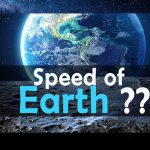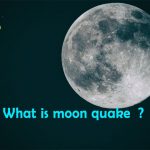Which is Solar System’s Tallest Volcano ?

A volcano is a break in a planetary-mass object’s crust that allows hot lava, volcanic ash, and gases to emerge from a magma chamber under the surface, such as Earth. For example, divergent tectonic plates cause volcanoes along a mid-oceanic ridge like the Mid-Atlantic Ridge, while convergent tectonic plates cause volcanoes along the Pacific Ring of Fire. Upwelling diapirs from the core–mantle boundary, 3,000 kilometres (1,900 miles) deep in the Earth, are thought to cause volcanism away from plate boundaries.
As ash and sulfuric acid droplets block the Sun and cool the Earth’s troposphere, major eruptions will influence atmospheric temperature. The word volcano comes from Vulcano, a volcanic island in the Aeolian Islands of Italy, whose name is derived from Vulcan, the Roman god of fire. Volcanology, also spelled vulcanology, is the study of volcanoes.
Cinder cones (also known as spatter cones), composite volcanoes (also known as stratovolcanoes), and shield volcanoes are the three types of volcanoes.. The largest are shield volcanoes, which get their name from their huge, rounded form.
Amazing facts about Volcanos
- Supervolcanoes are the most active volcanoes on the planet. A supervolcanic eruption can spit hellfire thousands of miles away, causing global climatic changes including a decrease in global temperature due to the release of tonnes of ash particles into the atmosphere.
- Mount Tambora, on the Indonesian island of Sumbawa, had the largest volcanic eruption ever seen. It exploded in 1815, killing nearly 100,000 people. According to the United States Geological Survey, Indonesia has the most historically active volcanoes, with 76 in total.
- The majority of volcanoes are located on the edges of tectonic plates, which are huge rock slabs that make up the Earth’s crust. However, some volcanoes, such as Yellowstone, are situated near “hot spots” where magma rises from deep inside the Earth.
- Perhaps worse was the eruption of Mount Pinatubo in the Philippines in 1991. According to the USGS, this volcano expelled 22 million tonnes of sulphur dioxide, which encircled the entire earth and reduced global temperatures by at least 0.5 degrees Celsius.
- Volcanoes have the potential to expand. Layers and height are applied to the volcanic surface when lava and ash collect. This is a popular method for building mountains.
- Mauna Loa in Hawaii is the world’s largest volcano. It is one of Hawaii’s five volcanoes, rising 13,000 feet above sea level. A hot spot was responsible for the creation of the Hawaiian Islands.
- Sunsets are boosted by volcanoes. People all over the world saw unusually stunning orange and coral hues in sunsets when Alaska’s Kasatochi volcano erupted in 2008. Fine ash particles in the atmosphere disperse the sun’s rays, resulting in this visual effect.
- The Solar System’s Tallest Volcano Isn’t on Earth: That’s right, the Solar System’s tallest volcano isn’t on Earth at all, but on Mars. On Mars, Olympus Mons is a 550-kilometer-wide shield volcano that rises to a height of 27 kilometres. Since there are no plate tectonics on Mars, scientists claim Olympus Mons was able to grow so large.
- Underwater volcanoes have the potential to shape islands! Did you know that the Hawaiian islands were formed by underwater volcanic eruptions, for example? You will see how the islands developed in a chain when a tectonic plate moved the volcano around the earth’s surface if you look at them on a map.
- Volcanic erupsions come in three forms. Magmatic eruptions are caused by the gas within magma decompressing and propelling it forward. The heat from magma produces superheated steam, which drives phreatic eruptions. The mixing of water and magma triggers phreatomagmatic eruptions.
















